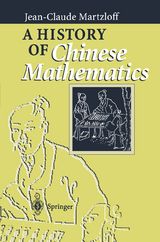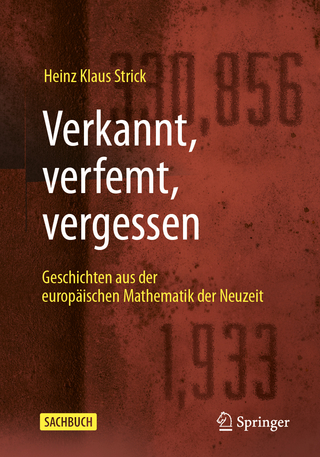A History of Chinese Mathematics
Seiten
2006
|
Softcover reprint of the original 1st ed. 1997
Springer Berlin (Verlag)
978-3-540-33782-9 (ISBN)
Springer Berlin (Verlag)
978-3-540-33782-9 (ISBN)
- Titel ist leider vergriffen;
keine Neuauflage - Artikel merken
Since the end of the 19th century, a number of specialised journals, albeit with a large audience, have regularly included articles on the history of Chinese mathematics, while a number of books on the history of mathematics include a chapter on the subject. Thus, the progressive increase in our knowledge of the content of Chinese mathematics has been accompanied by the realisation that, as far as results are concerned, there are numerous similarities between Chinese mathematics and other ancient and medieval mathematics. For example, Pythagoras' theorem, the double-false-position rules, Hero's formulae, and Ruffini-Harner's method are found almost everywhere. As far as the reasoning used to obtain these results is concerned, the fact that it is difficult to find rational justifications in the original texts has led to the reconstitution of proofs using appropriate tools of present-day elementary algebra. Consequently, the conclusion that Chinese mathematics is of a fundamentally algebraic nature has been ventured. However, in recent decades, new studies, particularly in China and Japan, have adopted a different approach to the original texts, in that they have considered the Chinese modes of reasoning, as these can be deduced from the rare texts which contain justifications. By studying the results and the methods explicitly mentioned in these texts hand in hand, this Chinese and Japanese research has attempted to reconstruct the conceptions of ancient authors within a given culture and period, without necessarily involving the convenient, but often distorting, social and conceptual framework of present-day mathematics.
The Context of Chinese Mathematics.- The Historiographical Context.- The Historical Context.- The Notion of Chinese Mathematics.- Applications of Chinese Mathematics.- The Structure of Mathematical Works.- Mathematical Terminology.- Modes of Reasoning.- Chinese Mathematicians.- The Transmission of Knowledge.- Influences and Transmission.- Main Works and Main Authors (from the Origins to 1600).- The Content of Chinese Mathematics.- Numbers and Numeration.- Calculating Instruments.- Techniques for Numerical Computation.- Geometry.- Indeterminate Problems.- Approximation Formulae.- Li Shanlan’s Summation Formulae.- Infinite Series.- Magic Squares and Puzzles.
| Erscheint lt. Verlag | 20.7.2006 |
|---|---|
| Übersetzer | S.S. Wilson |
| Vorwort | J. Gernet, J. Dhombres |
| Zusatzinfo | XXIV, 487 p. 83 illus. |
| Verlagsort | Berlin |
| Sprache | englisch |
| Maße | 155 x 235 mm |
| Gewicht | 723 g |
| Themenwelt | Mathematik / Informatik ► Mathematik ► Allgemeines / Lexika |
| Mathematik / Informatik ► Mathematik ► Geschichte der Mathematik | |
| Schlagworte | China • Chinesische Mathematik • Conceptual History • Ethnomathematik • Ethonomathematics • Finite • Geometry • History of Mathematics • Ideengeschichte • Mathematics • Mathematikgeschichte • Mathematik, Geschichte |
| ISBN-10 | 3-540-33782-2 / 3540337822 |
| ISBN-13 | 978-3-540-33782-9 / 9783540337829 |
| Zustand | Neuware |
| Haben Sie eine Frage zum Produkt? |
Mehr entdecken
aus dem Bereich
aus dem Bereich
Geschichten aus der europäischen Mathematik der Neuzeit
Buch | Softcover (2024)
Springer (Verlag)
CHF 41,95




